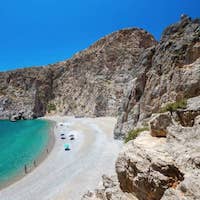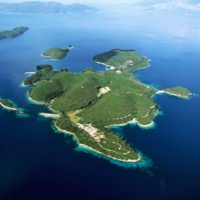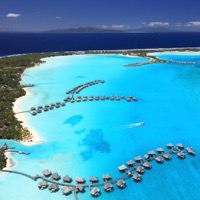Author: Jennifer Conolly
published: Dec 06, 2016 | last updated: Dec 06, 2017
Stories of castaways have populated the human imagination for centuries. The idea of people surviving alone in the face of untamed nature is both thrilling, scary, and intriguing. This is why books like Robinson Crusoe and Gulliver’s travels; and films like Blue Lagoon and the heart-wrenching Castaway, have enjoyed such success.
Sometimes, however, reality turns stranger than fiction - especially when it comes to humanity’s fight for survival. These ten real life stories of castaways are not only incredible, but also inspiring. After all, who wouldn’t like to be the badass who can survive with barely any tools or help on an island?
If you want to know what to say when someone asks the overplayed “if you had to survive on a deserted island, what would you bring?” question, these stories might just give you the answer:
John F. Kennedy (1943)
As the 35th President of the United States of America, Marilyn Monroe’s lover, and one of the most iconic figures of the western world, JFK has a lot of bragging rights under his belt. Few people, however, add “castaway survivor” to his list of accomplishments.
In 1943, Kennedy was a marine officer commanding PT-109, and stationed on the Solomon Islands. During a nightly patrol, the ship was attacked by a Japanese Destroyer. The force of the attack was so strong that it split PT-109 in two and caused a chaotic shipwreck. Twelve lives were lost, but the rest of the crew managed to cling to a wooden bow, used as a lifesaver. They floated around for 5 hours, trying to keep the wounded from falling into the waters.
Finally, through team effort and with a lot of pain, they managed to move the bow to a nearby island, then named Plum Pudding Island. After two days without food, Kennedy realized he would lose the rest of his crew if he didn’t act quickly. They set out into the sea and made it to Olasana Island, which was not too far away and whose bigger size enhanced their chance of survival. Though resources didn’t abound, the crew managed to live for 6 days on coconuts and before they were rescued.
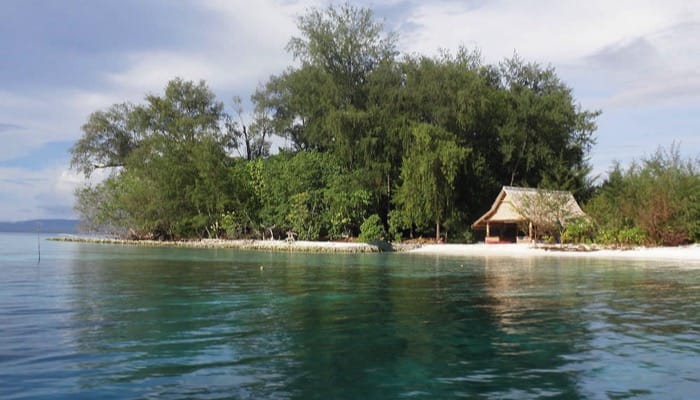
Kennedy Island By Nash Belarus, CC BY-SA 3.0 Plum Pudding Island was renamed Kennedy Island in commemoration of the event. It is now a popular tourist destination and visited by people all over the world, who are intrigued by this peculiar story.
Jose Salvador Alvarenga (2012)
The world’s most recent famous castaway story is still sending waves through mass media, and it’s not difficult to see why. After all, it’s not every day that a man presumed dead for over a year turns up 6,000 miles away from home. It’s a story so unlikely, that even Alvarenga has a hard time believing he actually made it.
On November 2012, the Salvatorian fisher was cruising off the Pacific coast of Mexico with his companion, Ezequiel Cordoba. A storm parted the skies unexpectedly and killed the engine of the boat, but did not wreck it. Though they had escaped the deepness of the ocean, they did not have many supplies and quickly ran out of food and water.
Both men drifted aimlessly, catching fish, doing their best to collect rainwater, and looking out for any sign of life that would mean rescue. Cordoba could not stomach the raw food diet and tragically died after four weeks. Alone, desperate, and with nothing but the vast ocean to keep him company, Alvarenga contemplated suicide. Still, he kept going on whatever food he managed to catch and survived 13 months on the Pacific Ocean.
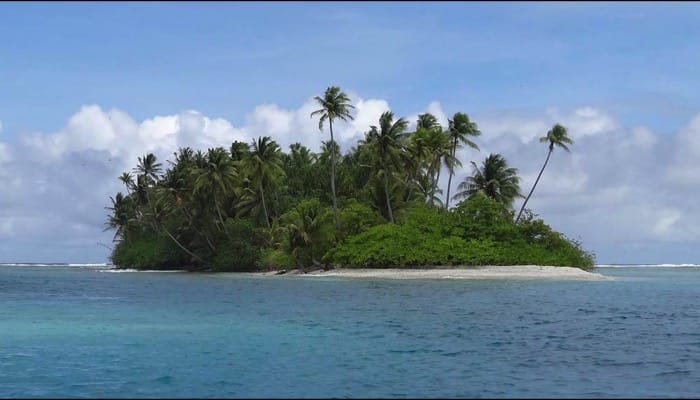
Ebon Atoll Finally, he washed up on Ebon Atoll in the Marshall Islands, where natives found him, nursed him back to health, and called authorities.
His story shook up the world, as every major news outlet fought to tell it first, and his face was plastered on every television and newspaper on the planet. As a result, he reunited with his family and is slowly getting better.

Jose Salvador Alvarenga Jose is now facing a $1million lawsuit from his former attorney, and accusations of falsehood and cannibalism from Cordoba’s family.
Alexander Selkirk (1704)
If you loved Robinson Crusoe when you were a kid, then you’ll be happy to find out he was inspired by a real man. Alexander Selkirk, was cast away by the fear of a shipwreck rather than by an actual wreck. The Scottish sailor got on his captain’s nerves when he protested his decision to pick up extra supplies as they sailed back home. He thought that this would put too much weight on the ship and put them all in danger. To prove his point, he declared that he would rather be left on an island than continue being on the ship. Annoyed by this, his captain responded by taking his claim literally and leaving him on one of the Juan Fernandez Islands on the South Pacific Ocean.
As he got off the ship, Selkirk couldn’t have imagined that it would take almost 5 years for anyone to pass by the island again. While he waited, he survived by fishing for oysters, shellfish, and other marine life. Eventually, the sea lions drove him further inland where he built shelter, and befriended wild cats that kept away furious rats. Because some people are born lucky, he also found goats, which provided him with food, clothes, and even milk.
In an unlikely turn of events, he was rescued by the world’s most famous criminals: pirates. In 1709, a pirate ship docked on the island and found a surprised Selkirk, then took him back to civilization.
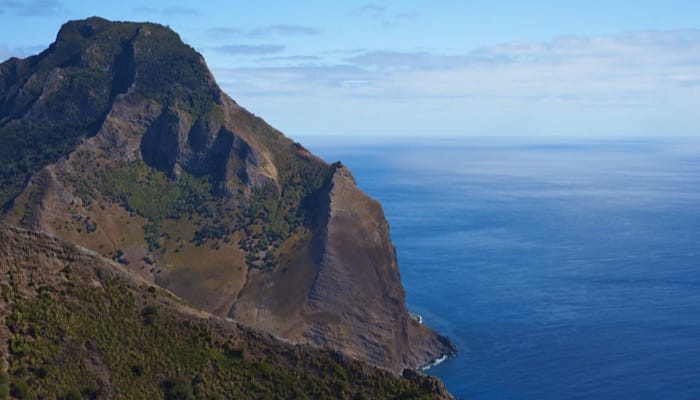
Robinson Crusoe Island The island he called home was renamed Robinson Crusoe Island. It is now the most populated of the Juan Fernandez Islands, and is a popular tourist spot for those looking for a unique destination.
Narcisse Pelletier (1858)
Narcisse Pelletier is one of the world’s youngest castaway survivors. His story tells both of human cruelty, and kindness, and makes you wonder which one he met more of.
At only 14 years old, Pelletier worked onboard a ship that sailed through the Cape York Peninsula near Papua New Guinea. Reportedly because of the captain’s reckless decision, the ship struck a reef and sank. The survivors got on a boat and sailed to nearby Rosser Island, but the natives did not take kindly to their visit and forced them to continue on.
Two weeks later, the crew was facing the reality of limited supplies and an uncertain future. They happened upon an island, near Cape Direction in Queensland, with fresh water but decided to continue on their way. Before they did, however, they made sure Pelletier wasn’t onboard. After all, what could a teenager do but deplenish their precious supplies?
You might want to worry about the fate of this poor boy, but his luck turned as two native women found him. They not only rescued and fed him, but actually took him in as one of their own, renaming him Amglo. Some 17 years later in 1875 a boat passed by and sent crew ashore to find fresh water, on finding Pelletier they bargained for him and took him from the island. Later he said it was against his will but the crew had guns and he feared for his life.
Philip Ashton (1722)
Though all surviving castaways could be described as lucky, Philip Ashton has got to be the luckiest of them all. His story begins with tragedy, as he was captured by pirates in 1722, probably with the intent of enslaving him and using him for forced labor. Armed with wits, courage, and apparently Poseidon’s favor, he managed to escape the pirates and hide in Roatan Island in Honduras. Being able to escape slavery is pretty ridiculously lucky, but luck continued to favor him: He actually found another castaway on the island! The two quickly struck up a friendship, recognizing both companionship and a better chance of survival if they stuck together.
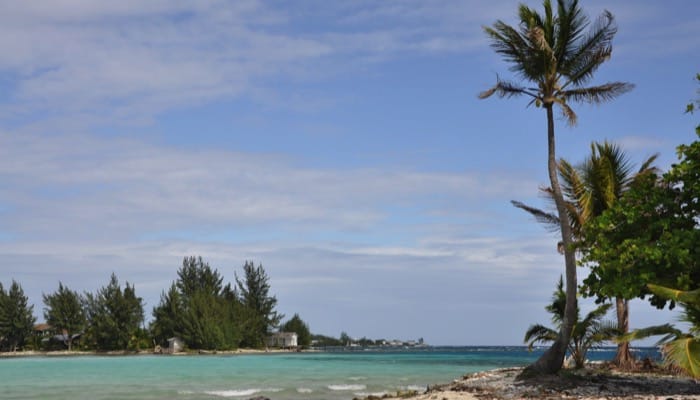
Honduras The friendship, however, did not last too long. One day, his companion ventured into the jungle in search for food, and never came back. Though left without a friend, Ashton was not left without resources, as the lost man’s supplies include gunpowder, knives, and even tobacco. With this, he was able to hunt for food, make shelter for himself, and even enjoy a smoke at the end of the day.
He was eventually rescued by a New England ship, were his story was met with awe and probably as much jealousy as we’re all feeling right now. Roatan Island is now one of Honduras’ most popular destinations, boasting beautiful coastlines, warm weather, and a lush jungle.
Jeronimus Cornelisz (1611)
The story of Jeronimus Cornelisz is the chilling story of a castaway turned psychopathic murderer. In 1611, Cornelisz and more than 300 other people were onboard a merchant ship of the Dutch East Indian Company that was wrecked off the coast of Western Australia.
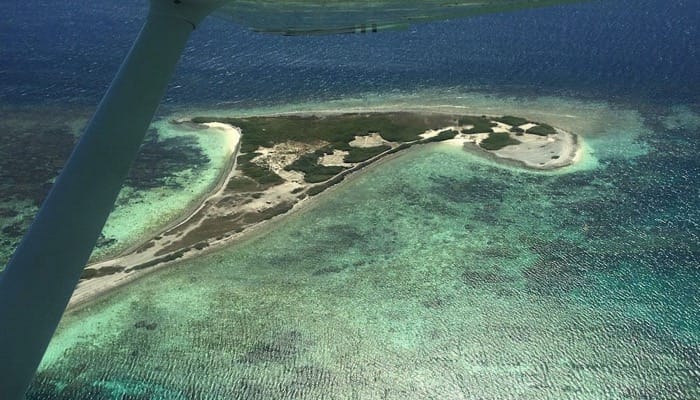
Beacon Island By Vunz CC BY-SA 4.0 More than half of the passengers survived and managed to get to Beacon island, one of the Houtman Abrolhos Islands. What should have been an inspiring story of survival became that of horrible mass murders as the simple merchant carried out horrid plans for control and power. While aboard the ship, Cornelisz and 36 other men had planned mutiny against Francisco Pelsaert, the commander. Nature interfered with their plans when it threw their ship against the corals that destroyed it. Once on the island, Pelsaert and another merchant set off on a boat to look for help.
During their absence, Cornelisz took dictatorial control of the island and instituted a reign of terror. He and the men who had planned the mutiny led a military-style regime that enslaved women for sexual exploits, and tortured anyone who protested. When supplies started to wean, the story became even bloodier, as the regime started to kill those they deemed dispensable in cruel and horrific ways.
Eventually, Pelsaert came back with help, and captured Cornelisz and his men, but not before they had claimed the lives of around 120 people. All but two of the perpetrators were hung for their crimes.
To turn matters even more grim, the mass graves were unearthed and turned into a morbid tourist attraction for some time.
Juana Maria (~1830)
The incredible story of this indigenous woman made headlines in the 1850s and inspired Scott O’Dell’s book, Island of the Blue Dolphin.
Juana Maria was not cast away by the cruelty of nature, but rather by the fault of man. As a native of San Nicolas Island, she and her people suffered attacks by Russian hunters who wanted access to the land. In an attempt to save them from being massacred, missionaries on the island arranged for a boat that was to carry them all back to mainland California. During the confusion, Juana Maria reportedly left the ship in search for her lost infant. At this time, high winds threatened and the captain decided to leave without her.

San Nicolas Island Left stranded on a now-deserted island, Juana Maria was forgotten by those who had abandoned her, but managed to survive for around 20 years without supplies. She built a shelter using the bones of whales, and hunted sea otters and birds for food and clothes. With no one to talk to, she developed a language of her own and probably gave up all hope of ever seeing another human being again.
Her fate changed in 1953 when Captain George Nidever found her on the island and decided to take her to California. Though unable to communicate, she did not pose any problems as she boarded the ship. Nidever invited her to live in his home, and introduced her to the advancements society had made while she was isolated. Unfortunately, she was not able to adapt to the lifestyle and food, and died of dysentery only seven weeks after being rescued. Nicknamed the Lone Woman of San Nicolas, her story continues to intrigue survivalists and anyone who’s a sucker for a good story.
Fernao Lopes (1516)
One of the world’s first castaways to become legend, Fernao Lopes has a story that sounds like it’s straight out of an adventure book.
The Portuguese Sailor lived a relatively normal life until he betrayed his country by siding with the Indian Muslims in Goa during a revolt. As punishment, he was dismembered, tortured, and disfigured. Forced upon a ship set for Lisbon, he was to be brought back to the Empire for further punishment.
Lopes, however, wouldn’t reach his homeland. Instead, he took advantage of the ship’s momentary docking in St. Helena to escape. On the deserted island, he retreated from society, living in complete solitude, and hiding any time a ship docked there. His solitude and story became known throughout the land, until he became a legend to sailors, many of which would leave him supplies and tributes when they passed by.
Eventually, his fame got the attention of the King, who invited him back and offered him pardon. Lopes, to the surprise of most, accepted the invitation. After receiving both a celebrated welcome and pardon for his lack of loyalty, he surprised the world once again by announcing his desire to go back to the island. He stayed there until his death in 1545.

St Helena Island St. Helena eventually received an even more celebrated exile: Napoleon Bonaparte. However, many still remember Lopes as the island’s first lonesome resident. Today, boats and yachts sail to the island for short visits. A small airport for charter flights is currently under construction, and is set to open on May, 2016.
Gerald Kingsland & Lucy Irvine (1983)
While all castaway stories tend to be hard-to-believe, the story of exiling yourself on an island as a social experiment pushes the limits. Most normal human beings wouldn’t think of torturing themselves this way, but Gerald Kingsland had been nurturing the idea for some time, and he wanted someone who would do it with him. As a solution, he put an ad out for a wife who needed to be willing to live with him on a deserted island for a year. Strangely, someone answered, and the two started making plans for the future.
This is how in 1982 Lucy Irvine and Gerald Kingsland found themselves stranded on Tuin Island, less than 100 miles from Papua New Guinea. While the experiment seemed to have started fairly well, living with limited resources proved more difficult than the eccentric couple had predicted. They managed to survive for almost a year, but continuously found it difficult to secure fresh water- the one resource they needed the most.
Lucky for them, their experiment was cut short by Badu Islanders who rescued them and took them back to civilization. They not only survived but also capitalized on their experience by writing two separate accounts of the story. Irvine’s 1983 book Castaway was a success and it is said to have inspired the film by the same name starring Tom Hanks. Kingsland published his version, The Islander, a year later.
US Navy finds 3 Castaways (2016)
And lastly in the news recently - three men were rescued by the US Navy after being spotted on the tiny island of Fanadik in Micronesia. They had been missing for 3 days since their boat had been overcome by a large wave.
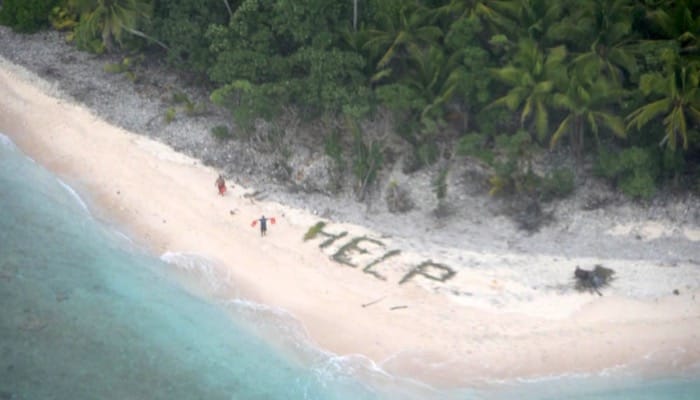
Fanadik Island Luckily the men made themselves very visible by spelling out HELP on the beach and by waving their orange life jackets.





